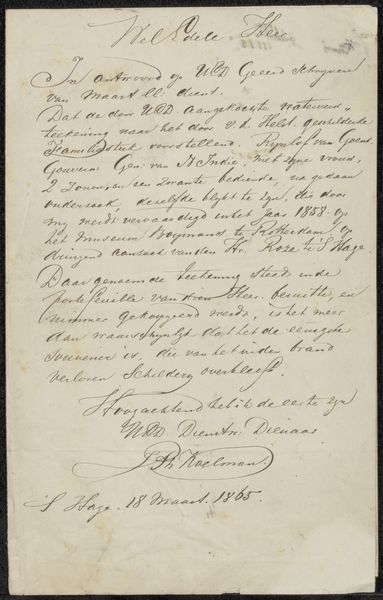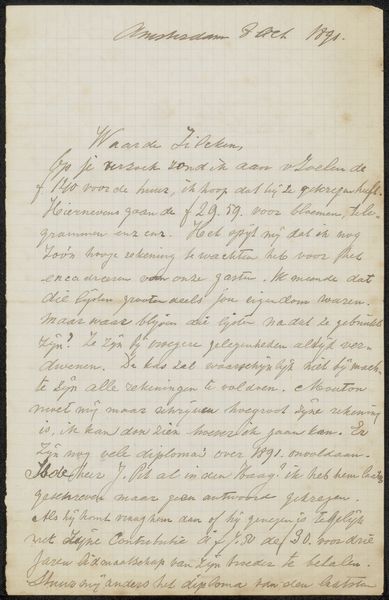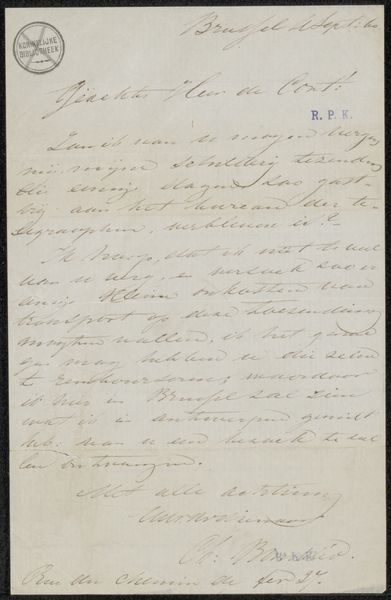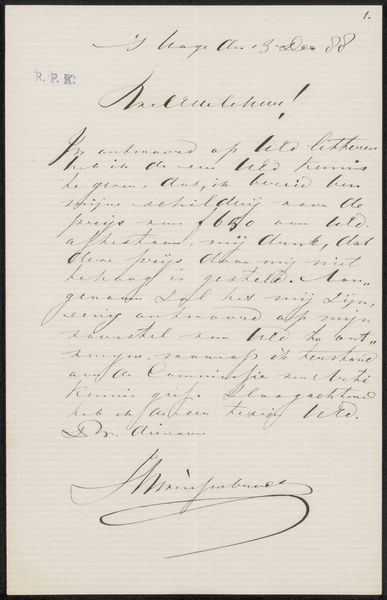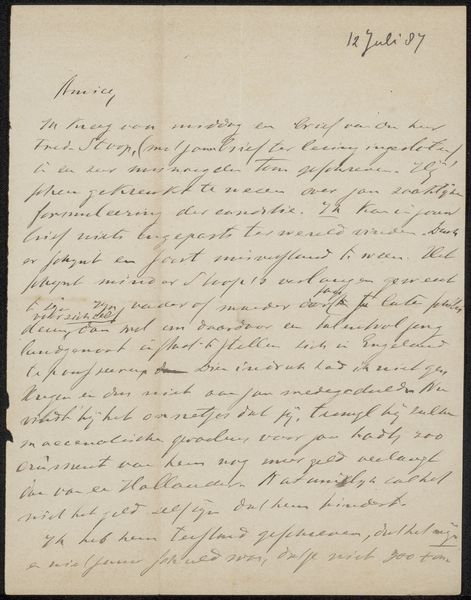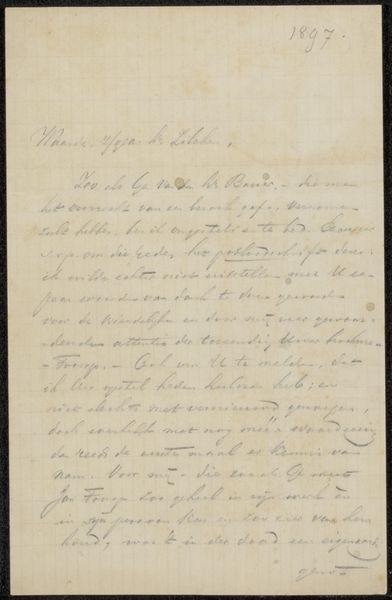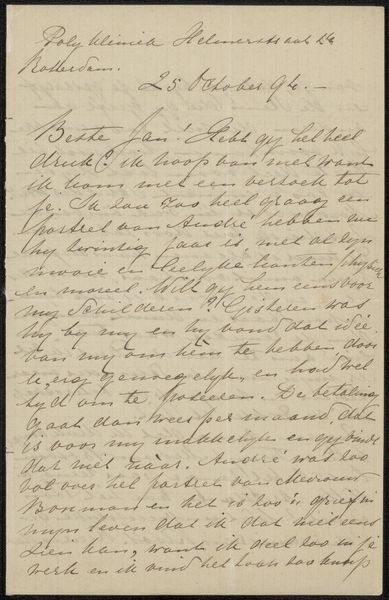
drawing, paper, pen
#
drawing
#
paper
#
romanticism
#
pen work
#
pen
#
watercolor
Copyright: Rijks Museum: Open Domain
Curator: Charles Howard Hodges, a name I confess I didn't know intimately before seeing this curious thing – “Brief aan professor Göller,” or “Letter to Professor Göller,” penned sometime around 1834 or 1835, a pen and watercolor drawing on paper. My immediate sense? Restlessness. Editor: Definitely restlessness. You get that in the hurried hand, the close writing; it makes me think about who had the luxury of taking their time, writing things over nicely, and who didn't. Was Hodges stressed about the message, about Göller's response, or perhaps struggling to make ends meet and churning things out quickly? Curator: Precisely! The Romantic period gets painted as this floaty dream, but that neglects how it was lived for many. Reading some lines – "Harold" is returned again…a little metamorphosed," or something to that effect. "The other original effusions–it will be published by subscription." Is this Hodges hustling to get something off the ground, leaning on old connections? Editor: That tension between high ideals and quotidian grind is totally visible here. He's writing to a professor, after all; it's a power dynamic at play. And publishing by subscription tells a story about precarity. Before widespread publishing infrastructures, writers were reliant on these networks of patronage. We can also reflect on which voices were included in that artistic conversation and which were excluded due to their location within the social hierarchy. Curator: It is beautiful penmanship, though. See how the weight of the ink changes, those delicate serifs…He cares about the craft, even if he's in a rush. Even in these circumstances, the style reveals how connected he feels to some of his idols, but the means necessary to participate in art creation is dependent on more than drive. Editor: It reminds me that even seemingly straightforward historical documents are always layered performances. Each mark carries the weight of those complex circumstances. I now wonder, in what ways does it speak to issues we face today around fair access to art making and exhibition? Curator: A brilliant question. And looking closer… it does. What an intricate thing, all folded into a single page, it shows, just as anything written now does, a lot about human behavior at a given time.
Comments
No comments
Be the first to comment and join the conversation on the ultimate creative platform.

